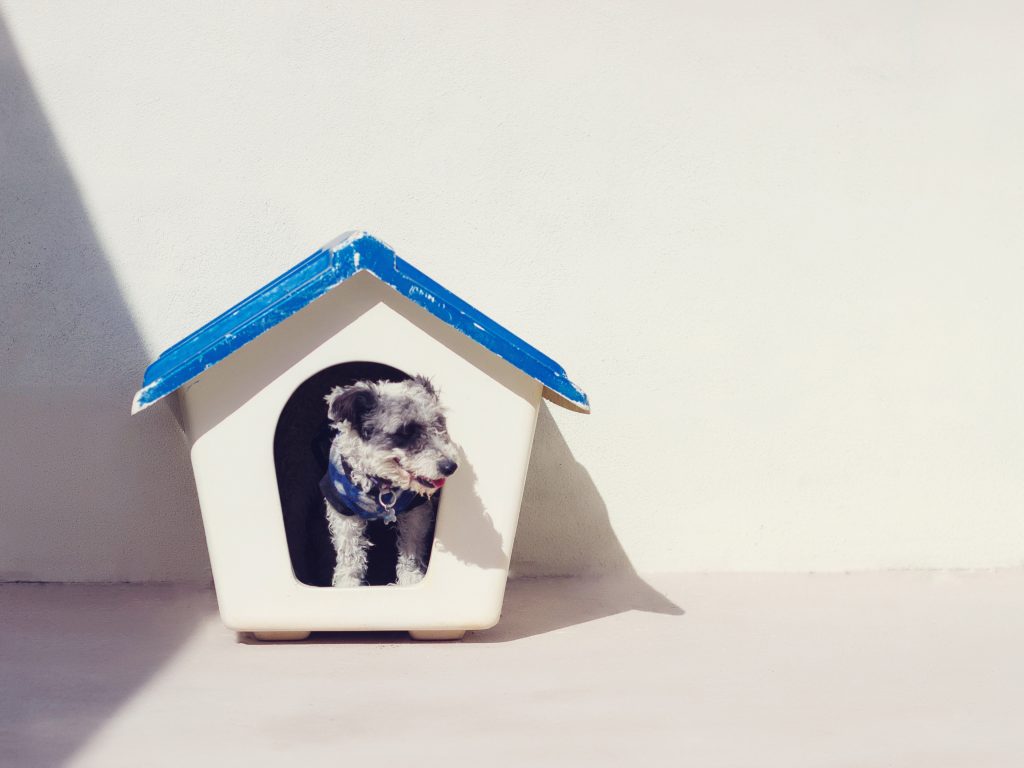As anyone who has ever baby-proofed a house can attest, there’s no shortage of hazards in the average house. The same is true once you bring fur-babies into your home. Dog-proofing your house is certainly a significant project, but the investment is beyond worthwhile when you know your space is 100% safe for your four-legged family member.
We’ve compiled our 10 things to focus on when it comes to making your home a pet hazard-free zone.
ELECTRICALS:
Electrical cords, cables and chargers left tangled or on the ground will be play-things for a curious pooch. This can present a choking and electrocution hazard, so be sure to contain your electrical cords in a dedicated and secure box or keep well above your dog’s standing height.
Cover electrical outlets and unplug items that aren’t in use. Here’s a great DIY tip to keep cords chew-proof, by using split flexible plastic conduit available at automotive stores.
FOOD AND WASTE:
The kitchen can be a feasting ground for your fur-baby, but this can have terrible repercussions if they insist on ingesting non pet-friendly substances. It’s a good idea to get into the habit of wrapping up all food or storing in air-tight containers, and ensuring these are kept in dedicated cupboards. Both plastic wrap and certain foods will be problematic for dogs if ingested.
Keep the kitchen floor mopped and vacuumed as regularly as possible to avoid stray leftovers making their way into a hungry pup’s mouth. And definitely keep garbage well covered. Invest in a secure bin with a lid that your pet can’t tamper with, to avoid them diving into your scraps.
CHOKING HAZARDS:
Keep children’ toys tucked away and regularly vacuum the living areas to avoid any loose parts or small items becoming a choking hazard. Does your lounge room house many knick-knacks or ceramics? Ensure that these can not be knocked down or broken into small, jagged pieces. Be sure to store sharp items of any sort, including scissors and knives, well out of reach.
HEATING AND VENTILATION:
Heating vents can be a potential burning hazard for your dog, while air vents may mean they get uncomfortably chilly. Most pet stores will have ventilation covers you can utilise to ensure your pooch stays at the perfect temperature. Consider other sources of heat within the home, including the kitchen.
PLANTS
Certain varieties of outdoor and indoor plants can prove poisonous to pets – even some gorgeous flowers! Do you research and make sure you’re aware of those that are potential hazards for your animals. Make sure that any hanging plants are well out of reach when positioned inside or on the pagola.
CHEMICALS
Pay particular attention to cleaning products housed in the kitchen, laundry, bathroom and garage and ensure nothing can be ingested or irritate your pup’s skin and eyes. Keep an eye on all medications and tablets of any sort, so that there’s no chance of a few stray Panadol causing them unnecessary pain.
Use a child-latch on your toilet to prevent any thirsty pooches choosing it as their resident drinking bowl, along with bleaches and other chemicals. When it comes to outdoors, try to swap out chemical fertilisers with organic alternatives to lessen the impact on your dog.
CLOTHES
A shoe is simply the ultimate toy to any pooch we’ve ever known, but this seemingly harmless habit can turn dangerous if not monitored. Keep laundry baskets and clothes/shoes around your bedroom contained and out of the way of your dog, to avoid having things chewed to pieces. In doing so, your pet could easily dislodge buttons, drawstrings and appliqués.
NOOKS AND CRANNIES
This one is dependent on the size of your dog, but is easy to overlook. There are plenty of small, confined spaces in your home where a pet could get trapped. As hard as it is to imagine, an accidental oversight could have potentially devastating impacts. If your pet has been in the room while you’ve been doing the laundry or rooting through your wardrobe, always be sure to double check these confined spaces to ensure your dog hasn’t curled up in there for warmth, or accidentally gone exploring in Narnia.
BARRICADES
Just like babies, your furry family members need physical boundaries within their space to keep them safe. If there are areas of your house which present a significant hazard to your pooch, or even if you’re going out and don’t want to fully crate or restrain them, a baby gate can be a great option. A fence around your property and pool (if applicable) will thwart any escape plans and keep your pet from falling in the deep end, literally.
ROLE-PLAYING ROVER
It sounds silly, but when you’re dog-proofing, it pays to put yourself in your pooch’s paws! Even go to the extent of getting on all fours and seeing things from the height of your pet. Suddenly, potential hazards will start to stick out in ways they never have before. Make sure to action anything you find straight away and rest easy in the knowledge your pet is as safe as possible in their space.

